Massca Twin Pocket-Hole Jig Set Review
- April 4, 2024
- 0 comment
The Massca Twin Pocket-Hole Jig Set is a tool that allows you to create pocket holes in wood. Pocket holes are a type of joint that is created by drilling an angled hole into one piece of wood, and then screwing another piece of wood into the first piece from the side. Pocket holes are a strong and easy way to join wood together, and they are a popular choice for woodworking projects.
Product Specs
- Bushings/Drill Guide Sizes: This will determine the size of the pocket holes you can create. A common size is a Kreg Jig standard (3/8″).
- Material Compatibility: Some jigs are designed for specific materials like wood or composite boards.
- Workpiece Thickness Capacity: This will tell you the range of wood thicknesses the jig can handle.
- Clamping Mechanism: Some jigs have built-in clamps while others require separate clamps.
- Dust Collection Port: This helps with dust management while drilling.
Features of the Massca Twin Pocket-Hole Jig Set
Dual Drilling Holes

The dual drilling holes feature is a hallmark of the Massca Jig, setting it apart from many other jigs on the market. This functionality allows users to drill two pocket holes simultaneously, effectively halving the time it takes to prepare joinery for assembly. This feature is particularly beneficial for larger projects that require numerous pocket holes, ensuring consistency and saving valuable time.
Adjustable Drill Bit Depth
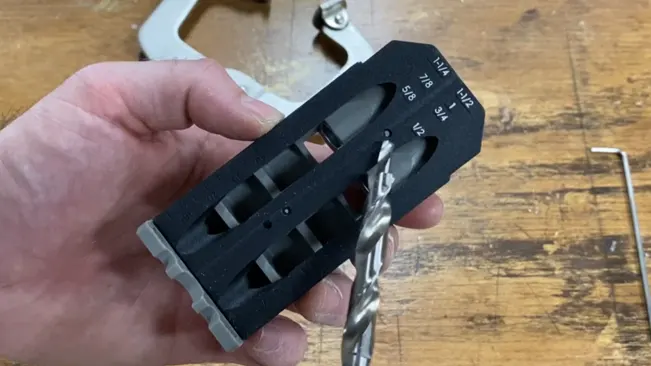
Adaptability is key in woodworking, and the Massca Jig’s adjustable drill bit depth caters to this need flawlessly. This feature allows woodworkers to set the drill bit to the exact depth needed for the thickness of the material they are working with. Whether it’s thin plywood or thick hardwood, the adjustable depth ensures that the pocket holes are precisely drilled for optimal strength and aesthetics of the joint.
Magnetized Guide and Clamp Integration
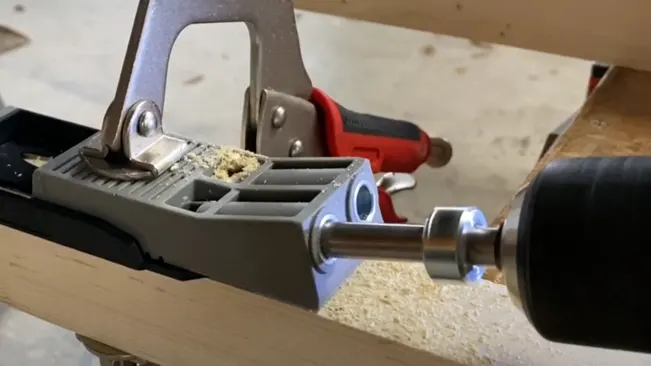
The Massca Jig’s magnetized guide and clamp integration is a testament to its thoughtful design. This feature ensures that the jig remains securely in place during the drilling process, preventing slippage and potential inaccuracies. The magnetized base attaches firmly to metal clamps, providing stability and confidence as you drill. This integration not only enhances safety but also contributes to the overall precision of your work.
Versatility in Material Thickness
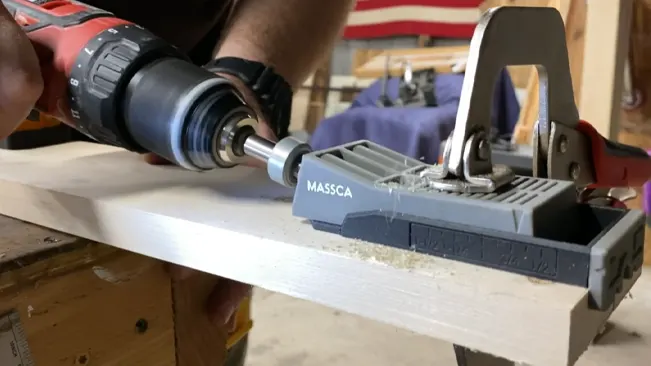
Woodworking projects come in all shapes and sizes, and the materials used can vary widely in thickness. The Massca Jig is designed to accommodate this diversity with its versatility in handling different material thicknesses. From slender panels to robust beams, the jig can be easily adjusted to suit the specific requirements of your project. This versatility ensures that the Massca Jig is a comprehensive solution for a wide range of woodworking tasks, making it an invaluable tool in any woodworker’s collection.
How to Use the Massca Twin Pocket-Hole Jig Set
Setting Up for Different Wood Thicknesses
- Select the Correct Drill Bit: The Massca Jig comes with a specially designed drill bit for creating pocket holes. Ensure it’s securely fitted into your drill.
- Adjust the Drill Bit Collar: Based on the thickness of your wood, adjust the stop collar on the drill bit. This controls how deep the bit will drill into the wood. The Massca Jig includes measurements to guide this adjustment.
- Set the Jig: Align the jig’s thickness settings with your wood’s thickness. The Massca Jig has clear markings and an easy-to-use mechanism for this adjustment, ensuring precision and ease.
Drilling and Creating Pocket-Holes
- Secure the Wood: Place your wood piece in the jig, ensuring it’s flush against the jig’s end. Use clamps if necessary to hold the wood firmly in place, preventing any movement during drilling.
- Drill the Holes: Position the drill bit in the guide holes of the jig. Drill steadily, allowing the bit to pull itself into the wood. The stop collar will prevent you from drilling too deep. Repeat for the second hole if using the dual-hole feature.
- Clean Up: After drilling, there may be some wood shavings in and around the pocket holes. Clear these away to ensure a clean, smooth surface for joining.
Attaching the Pieces Together
- Apply Glue (Optional): For added strength, you can apply a small amount of wood glue to the joining edges of your wood pieces. This is optional but recommended for most projects.
- Align the Pieces: Position the wood pieces as they will be joined. Make sure the edges and surfaces align correctly for a clean, tight fit.
- Screw the Pieces Together: Insert the specialized pocket-hole screws into the holes. Drive the screws through the holes until they pull the two pieces of wood tightly together. The unique design of pocket-hole screws, with a flat head and a smooth shank near the head, pulls the joint together without the need for clamps.
Table Comparison
| Feature | Massca Twin Pocket-Hole Jig Set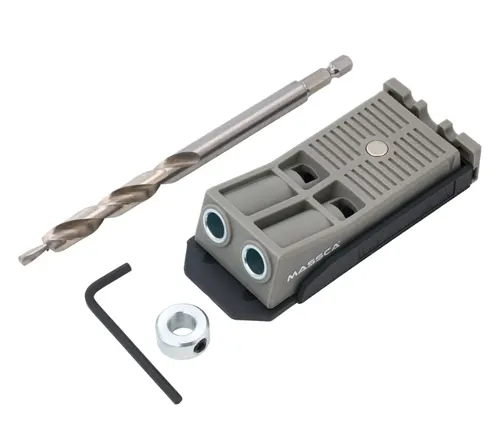 | Kreg Jig K4 Pocket Hole System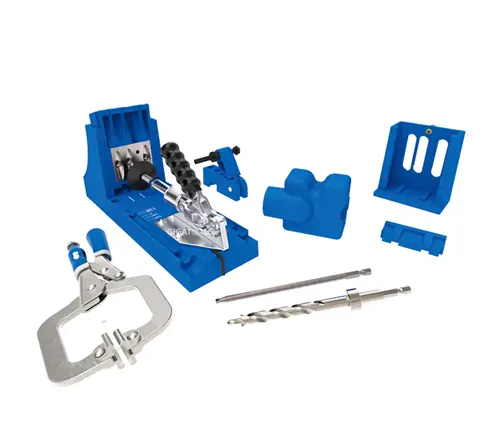 |
|---|---|---|
| Design and Build Quality | Durable aluminum construction with dual drilling holes. | Heavy-duty plastic with metal drill guide; single-hole drilling. |
| Ease of Use | User-friendly with magnetized guide and clamp integration. | Removable drill guide for versatility; tool-free adjustments. |
| Versatility | Adjustable for various material thicknesses. | Wide compatibility with different clamps and materials. |
| Unique Features | Magnetized guide for stability; dual drilling capability. | Dust-collection attachment for a cleaner work environment. |
| Price and Value | Competitively priced; offers good value for dual drilling feature. | Slightly higher in price; backed by the brand’s reputation and includes accessories. |
Summary
Both the Massca Twin Pocket-Hole Jig Set and the Kreg Jig K4 Pocket Hole System are valuable tools in the woodworking community, each bringing its own strengths to the table. The Massca Jig shines with its dual drilling capability and robust aluminum construction, making it an excellent choice for efficiency and durability. It’s particularly well-suited for users who work on projects requiring numerous pocket holes and who appreciate a sturdy, metal build.
On the other hand, the Kreg Jig K4 is recognized for its ease of use, with features like a removable drill guide and a dust-collection attachment that appeals to users prioritizing a clean workspace and versatility. While it might come at a slightly higher price point, it’s supported by Kreg’s strong reputation in the market and includes a comprehensive set of accessories for immediate application.
Pros and Cons of Massca Twin Pocket-Hole Jig Set
Pros
- Easy to Use: The magnetic base and built-in gauges (workpiece thickness, drill depth) are designed for quick setup and simple operation, making it ideal for beginners.
- Adjustable: It can handle a range of wood thicknesses (usually ½” to 1½”).
- Complete Kit: Often comes with a drill bit, stop collar, square driver, hex key, and sometimes even pocket hole screws, so you have everything you need to get started.
- Affordable: Compared to some name brands, Massca tends to be a budget-friendly option.
Cons
- Limited Brand Recognition: Massca may not be as established as some other pocket-hole jig brands, so there might be less user reviews and long-term durability information available.
- Potentially Less Durable: Being a budget option, it might be made with less robust materials compared to high-end jigs.
- Accuracy Concerns: There are some user reviews mentioning potential for slight inaccuracies in drilling, especially if the jig is not secured properly.
Maintenance and Care for the Jig
- After Use: Always clean your jig after each use. Sawdust and wood chips can accumulate in the drill guides and moving parts, potentially affecting the jig’s performance.
- Air Blowing: Use compressed air to blow out any sawdust from the drill guide holes and the clamp mechanism. This prevents build-up that could interfere with the operation of the jig.
- Soft Brush: For stubborn debris, a soft brush or an old toothbrush can be used to gently clean the nooks and crannies without damaging the jig.
- Check for Wear: Regularly inspect your jig for signs of wear and tear, especially around the drill guide holes, which can become worn with extensive use, potentially affecting the precision of your pocket holes.
- Tighten Loose Parts: Ensure that all components, especially adjustable parts and screws, are tight and secure. Loose components can lead to inaccuracies in your work.
- Sharpness: Keep the drill bit sharp. A dull bit can damage the jig and produce poor quality pocket holes. Replace or sharpen the bit as needed.
- Clean Drill Bit: Regularly clean the drill bit to remove any buildup of resin or wood debris. This helps maintain its cutting efficiency.
Conclusion
In conclusion, the Massca Twin Pocket-Hole Jig Set is a standout tool in woodworking for its efficiency, versatility, and durability. Its dual drilling feature and robust build make it ideal for various projects, from furniture making to repairs. The adjustable depth and stable design ensure precision across different materials. For anyone in woodworking, from hobbyists to professionals, the Massca Jig is a reliable choice for creating strong, high-quality joints, enhancing both the speed and quality of their work.
FAQs
1. Can the Massca Twin Pocket-Hole Jig Set be used on any type of wood?
Yes, the Massca Jig is versatile and can be adjusted to work on various types of wood, from softwoods like pine to hardwoods like oak, ensuring precise pocket holes across different material thicknesses.
2. How does the dual drilling feature of the Massca Jig benefit my projects?
The dual drilling feature allows you to create two pocket holes simultaneously, significantly speeding up the process and ensuring uniformity in your joinery, which is especially beneficial for larger projects.
3. Is the Massca Twin Pocket-Hole Jig Set suitable for beginners?
Absolutely! The Massca Jig is designed with ease of use in mind, featuring intuitive adjustments and a user-friendly setup, making it an excellent tool for beginners while also meeting the demands of experienced woodworkers.
4. How do I maintain my Massca Twin Pocket-Hole Jig Set?
Regular cleaning to remove sawdust, occasional lubrication of moving parts with dry lubricant, and storing in a dry, dust-free environment will help maintain your Massca Jig’s performance and longevity.
5. Can I use standard screws with the Massca Jig, or do I need special pocket-hole screws?
For optimal results, it’s recommended to use specialized pocket-hole screws, which are designed to work with the angle and depth of pocket holes, ensuring a strong and secure joint.

Joel Cunningham
Forestry AuthorI'm Joel Cunningham, an expert in pruning and weed management with over a decade of experience. My skills are rooted in formal training and extensive practice, focusing on advanced pruning techniques and efficient weed control. I'm known for my quality work, precision, and deep understanding of plant health and soil dynamics. My contributions extend to educational initiatives where I share sustainable practices and advice, establishing myself as a reliable and authoritative figure in the gardening community.



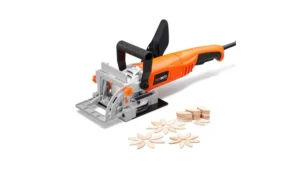
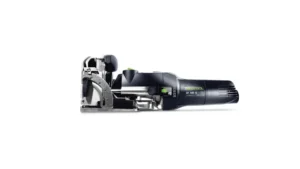
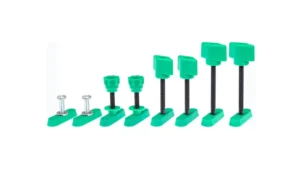
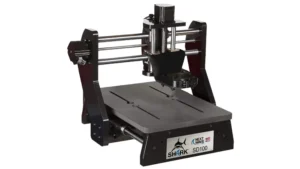
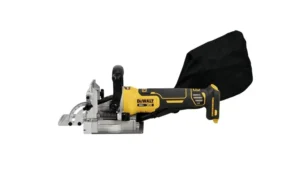

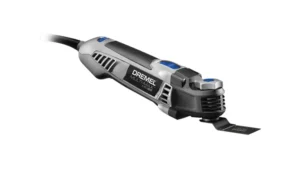
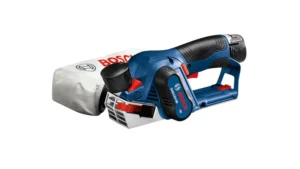


Leave your comment